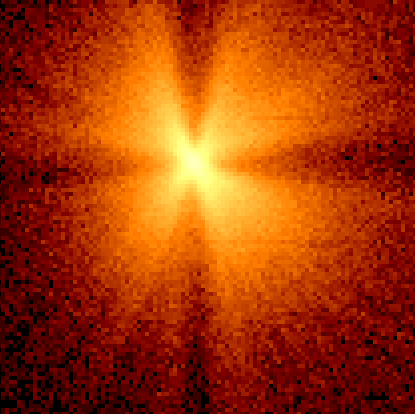ASCA Special Exhibit
The ASCA satellite and instruments

Schematic diagram of ASCA. (Credit: ASCA Guest Observer Facility)
The Advanced Satellite for Cosmology and Astrophysics (ASCA) is Japan's fourth cosmic X-ray astronomy mission, and the second for which the United States provided part of the scientific payload. The satellite was successfully launched February 20, 1993. The first eight months of the ASCA mission were devoted to performance verification. Then, having established the quality of performance of all the instruments, ASCA changed to a "guest observer" satellite for the remainder of the mission. In this phase, the observing program was open to astronomers based at Japanese and US institutions, as well as those located in member states of the European Space Agency.
Instrumentation

X-ray Pulsar EXO2030+375, a typical ASCA SIS point source. (Credit: ASCA Guest Observer Facility)
ASCA carries four large-area X-ray telescopes. At the focus of two of the telescopes is a Gas Imaging Spectrometer (GIS), while a Solid-state Imaging Spectrometer (SIS) is at the focus of the other two. The GIS is a gas imaging scintillation proportional counter and is based on the another instrument that flew on the second Japanese X-ray astronomy mission, Tenma. The two SIS instruments are identical Charge Coupled Device (CCD) cameras and were provided by a hardware team from MIT, Osaka University, and ISAS.
Published: February 1998
Text Reviewed: September 2018


